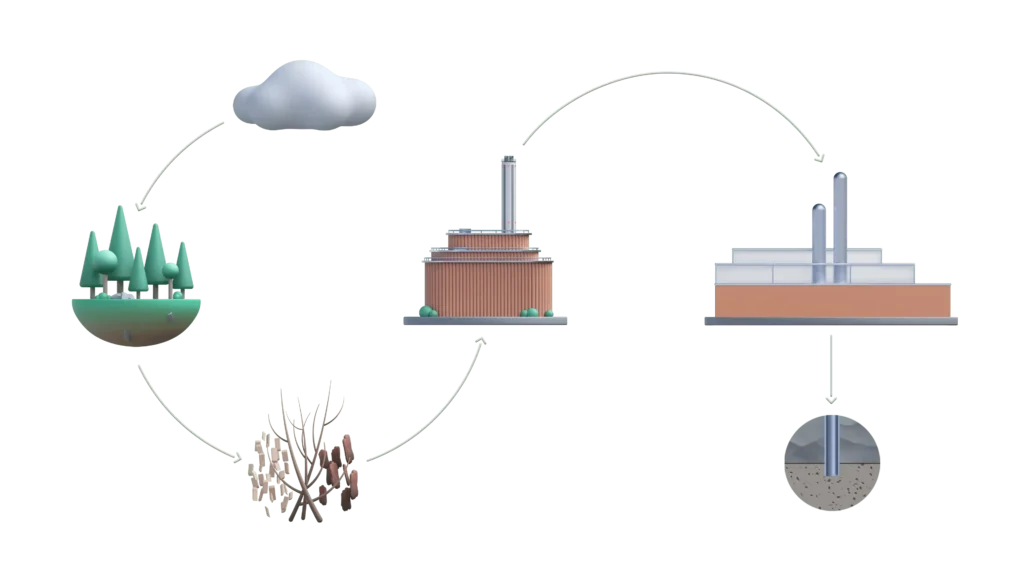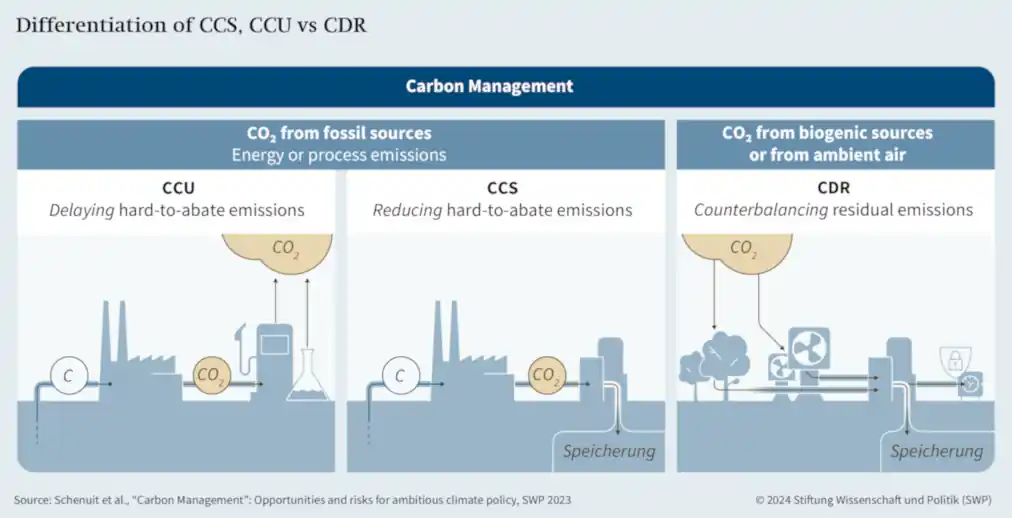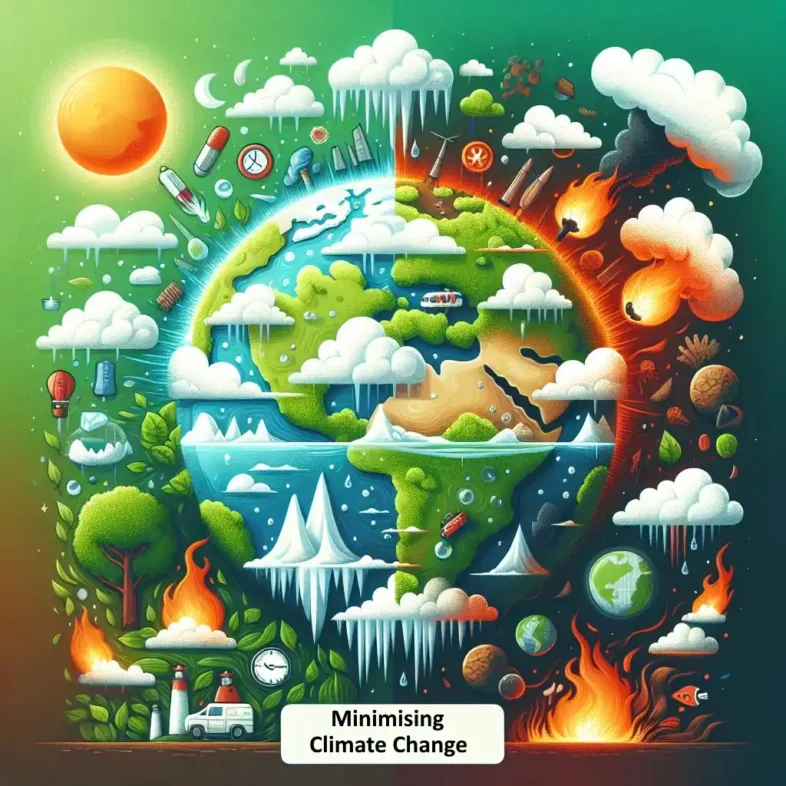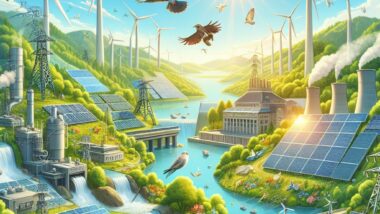Biogenic CDRs: What Are They?
What you will learn form this article:
- Biogenic carbon dioxide removal (CDR) involves capturing CO2 from natural processes and storing it to reduce atmospheric carbon levels.
- Unlike fossil CO2, biogenic CO2 originates from living organisms and contributes to a balanced carbon cycle when managed effectively.
- Key techniques include afforestation, BECCS, soil carbon sequestration, and macroalgae utilization.
- BECCS not only removes CO2 but also generates energy, offering dual benefits.
- Biogenic CDR is essential for combating climate change, as it complements emission reduction strategies.
Introduction to Biogenic Carbon Dioxide Removal (CDRs)
As we navigate the complexities of climate change, understanding biogenic carbon dioxide removal (CDR) becomes crucial. Biogenic CDR refers to the process of capturing and storing carbon dioxide that originates from biological sources. This approach is gaining traction as a vital component in our arsenal against global warming. But what exactly does it entail?
Overview of Biogenic Carbon Dioxide Removal
Biogenic CDR focuses on capturing carbon dioxide released from natural processes, such as plant respiration and decomposition. These processes are part of the natural carbon cycle, where carbon is continuously exchanged between the atmosphere, land, and oceans. By capturing this carbon and storing it, we can help mitigate the effects of climate change. This technique not only reduces atmospheric CO2 levels but also enhances natural carbon sinks, such as forests and soils.
l component in our arsenal against global warming. But what exactly does it entail?

“What is Carbon Dioxide Removal – Beccs …” from beccs.se and used with no modifications.
Difference Between Biogenic and Fossil CO2
It's important to distinguish between biogenic and fossil CO2. Biogenic CO2 is derived from contemporary biological processes, such as plant growth and decay. It is part of the natural carbon cycle and, when managed sustainably, does not increase atmospheric carbon levels. In contrast, fossil CO2 is released from burning fossil fuels like coal, oil, and natural gas. This type of carbon has been stored underground for millions of years, and its release contributes significantly to the greenhouse effect.
Importance in Combating Climate Change
Biogenic CDR plays a critical role in our fight against climate change. By removing carbon dioxide from the atmosphere, these techniques help stabilize global temperatures and reduce the impacts of climate-related events. Moreover, biogenic CDR complements emission reduction strategies, offering a holistic approach to managing our carbon footprint. As we strive to achieve net-zero emissions, integrating biogenic CDR into our climate action plans is essential. For instance, the integration of biogas systems can significantly contribute to these efforts.
With the urgency of climate change, we must explore every avenue available to us. Biogenic CDR offers a promising solution that not only addresses carbon emissions but also supports biodiversity and ecosystem health. By understanding and implementing these techniques, we can work towards a more sustainable and resilient future.
Key Biogenic CDR Techniques
Now that we've covered the basics, let's dive into the specific techniques used in biogenic CDR. Each method offers unique benefits and challenges, and understanding these can help us make informed decisions about their implementation.

“Differentiating CCS/CCU/CDR …” from x.com and used with no modifications.
Afforestation and Reforestation
Afforestation and reforestation are two of the most well-known biogenic CDR techniques. These methods involve planting trees to absorb CO2 from the atmosphere, storing it in their biomass. Trees act as natural carbon sinks, and by increasing forest cover, we can enhance their capacity to capture carbon.
- Afforestation: This involves planting trees in areas that have not been forested for a long time. It creates new carbon sinks and can restore degraded lands.
- Reforestation: This focuses on replanting trees in areas that were previously forested but have been cleared or degraded. It helps restore ecosystems and improve biodiversity.
Both afforestation and reforestation offer significant potential for carbon sequestration. However, they require careful planning and management to ensure sustainability and avoid negative impacts on local ecosystems and communities.
Most importantly, these techniques provide additional benefits beyond carbon capture. They support biodiversity, improve soil health, and offer economic opportunities for local communities. By integrating these practices into our climate strategies, we can create a more balanced and resilient environment. For instance, using biogas slurry as fertilizer can significantly enhance soil fertility and agricultural productivity.
Bioenergy with Carbon Capture and Storage (BECCS)
BECCS is an innovative approach that combines energy production with carbon capture. It involves using biomass, such as plant material and agricultural waste, to generate energy. During this process, CO2 is captured and stored, preventing it from entering the atmosphere. BECCS offers dual benefits by providing renewable energy and reducing carbon emissions. For more information on how biogas systems can be integrated into the energy system, check out this article on biogas systems integration.
Case Studies and Effectiveness
Understanding the real-world application of biogenic carbon dioxide removal techniques can provide valuable insights into their effectiveness and potential. Let's explore some global examples and success stories, particularly focusing on BECCS, and also address some challenges observed in soil sequestration.

“Carbon Dioxide Removal …” from rmi.org and used with no modifications.
Global Examples of Biogenic CDR
Across the globe, various projects are implementing biogenic CDR techniques with notable success. For instance, the Great Green Wall initiative in Africa aims to combat desertification by planting a vast stretch of trees across the continent. This project not only helps sequester carbon but also restores degraded land, supports biodiversity, and improves the livelihoods of local communities.
In Europe, countries like Sweden and Norway are leading the way in BECCS technology. They have integrated bioenergy with carbon capture and storage into their energy systems, helping them move towards their ambitious climate goals. These projects highlight the potential of biogenic CDR to contribute significantly to carbon reduction efforts.
Success Stories in BECCS
One of the most compelling success stories in BECCS comes from Drax Power Station in the UK. Drax has transitioned from a coal-fired power station to a biomass-fueled one, incorporating carbon capture technology. This transformation has allowed Drax to become one of the largest carbon capture projects in the world, capturing millions of tons of CO2 annually. Learn more about the biogas systems that contribute to such sustainable energy solutions.
The Illinois Industrial Carbon Capture and Storage project in the United States is another notable example. It captures CO2 from ethanol production and stores it underground, showcasing the versatility of BECCS in different industrial applications.
These projects have been criticised and may be flawed but they are all prototypes and we would argue that they do demonstrate the scalability and potential effectiveness of BECCS in reducing atmospheric CO2 levels.
There is a well-balanced article on the SLR Consulting website where you can judge the effectiveness of biogenic CO2 sequestration and also producing bioenergy with carbon capture and storage here.
Challenges Observed in Soil Sequestration
While soil carbon sequestration holds great promise, it also faces several challenges. One major issue is the variability in soil types and climates, which can affect the rate and stability of carbon storage. Additionally, measuring and verifying carbon sequestration in soils can be complex and costly, hindering widespread adoption.
Moreover, changes in land use or agricultural practices can release stored carbon back into the atmosphere, negating the benefits of sequestration. Therefore, long-term monitoring and management are crucial to ensure the sustainability of soil carbon storage efforts.
Challenges and Considerations
Despite the potential of biogenic CDR techniques, several challenges and considerations must be addressed to ensure their successful implementation. These include environmental impact, economic cost, and policy regulation.
Environmental Impact and Sustainability
While biogenic CDR offers environmental benefits, it is essential to consider its potential impacts on ecosystems and biodiversity. For example, large-scale afforestation projects can lead to monocultures, which may reduce biodiversity and disrupt local ecosystems. Therefore, careful planning and management are necessary to balance carbon sequestration goals with ecological sustainability.
Additionally, the sustainability of biomass sources for BECCS must be considered. Overharvesting or unsustainable land use can lead to deforestation and habitat loss, counteracting the benefits of carbon capture. Ensuring sustainable sourcing and land management practices is crucial for the long-term success of BECCS.
Economic Cost and Feasibility
The economic cost of implementing biogenic CDR techniques can be a significant barrier. For instance, the infrastructure and technology required for BECCS are expensive, and the financial viability of these projects often depends on government support or carbon pricing mechanisms.
Similarly, afforestation and soil sequestration projects require significant investment in land, labor, and monitoring. While the long-term benefits of these techniques are substantial, finding funding and support for initial implementation can be challenging.
Policy and Regulation
Effective policy and regulation are critical to the success of biogenic CDR initiatives. Governments play a crucial role in setting targets, providing incentives, and creating frameworks that support carbon capture and storage projects. However, inconsistent policies and lack of international coordination can hinder progress.
Moreover, robust monitoring and verification systems are necessary to ensure the credibility of carbon sequestration claims. Establishing clear guidelines and standards can help build trust and drive investment in biogenic CDR technologies.
Future Prospects of Biogenic CDR
As we look to the future, the prospects for biogenic carbon dioxide removal are promising. Continued innovation and research are driving advancements in carbon removal technologies, enhancing their efficiency and scalability.
Moreover, the growing awareness of climate change and the urgent need for action are spurring greater investment and policy support for biogenic CDR initiatives. These developments offer hope for a more sustainable and resilient future.
Innovations in Carbon Removal
Innovations in carbon removal are expanding the possibilities for biogenic CDR. For example, advancements in genetic engineering and biotechnology are improving the carbon capture capacity of plants and algae. These breakthroughs could enhance the effectiveness of afforestation and macroalgae utilization techniques.
Additionally, new materials and technologies are being developed to improve the efficiency of carbon capture and storage processes in BECCS. These innovations hold the potential to reduce costs and increase the scalability of biogenic CDR, making it a more viable solution for global carbon reduction efforts.

Projected Impact on Global Emissions
Biogenic carbon dioxide removal (CDR) techniques have the potential to significantly reduce global carbon emissions. By capturing and storing carbon from natural processes, these methods can help offset emissions from other sources, contributing to a more balanced carbon budget. For instance, if implemented on a large scale, afforestation and reforestation could sequester up to 3 billion tons of CO2 annually.
Moreover, BECCS offers a dual benefit by generating renewable energy while capturing carbon. It is estimated that BECCS could remove between 0.5 to 5 gigatons of CO2 per year by 2050, depending on the level of deployment and technological advancements. These contributions are vital for achieving the goals set out in international climate agreements, such as the Paris Agreement.
Besides that, soil carbon sequestration has the potential to store significant amounts of carbon, with estimates suggesting that improved soil management practices could sequester up to 2 billion tons of CO2 annually. This would not only help reduce atmospheric carbon levels but also improve soil health and agricultural productivity.
- Afforestation and reforestation: Potential to sequester up to 3 billion tons of CO2 annually.
- BECCS: Could remove between 0.5 to 5 gigatons of CO2 per year by 2050.
- Soil carbon sequestration: Potential to store up to 2 billion tons of CO2 annually.
Potential for Broader Adoption
The potential for broader adoption of biogenic CDR techniques is promising, particularly as awareness of climate change and the need for action grows. Governments and organizations worldwide are increasingly recognizing the importance of carbon removal in achieving climate goals, leading to greater investment and support for these initiatives.
Furthermore, technological advancements and innovations are making biogenic CDR more accessible and cost-effective. As these techniques become more widely adopted, they can play a crucial role in global efforts to mitigate climate change and transition to a more sustainable future.
Conclusion: Inspiring Environmental Responsibility
Biogenic carbon dioxide removal offers a powerful tool in our fight against climate change. By understanding and implementing these techniques, we can reduce atmospheric carbon levels, support biodiversity, and promote ecosystem health. As individuals and communities, we have the opportunity to take action and support these efforts, contributing to a more sustainable and resilient world.
Taking Action as Individuals and Communities
Each of us can play a role in supporting biogenic CDR initiatives. By advocating for policies that promote carbon removal, supporting sustainable land management practices, and reducing our carbon footprint, we can contribute to these efforts. Additionally, participating in community tree planting projects and supporting organizations that focus on carbon sequestration can make a meaningful impact.
Frequently Asked Questions
To help you better understand biogenic carbon dioxide removal, here are some frequently asked questions and their answers.
1. What Are Biogenic CDRs?
Biogenic CDRs are techniques that capture and store carbon dioxide from natural processes, such as plant growth and decomposition. These methods aim to reduce atmospheric carbon levels by enhancing natural carbon sinks, such as forests and soils.
2. How Does BECCS Work?
BECCS, or Bioenergy with Carbon Capture and Storage, involves using biomass to generate energy while capturing the CO2 emitted during the process. The captured carbon is then stored underground, preventing it from entering the atmosphere. This technique provides renewable energy and reduces carbon emissions simultaneously.
For example, a power plant might burn biomass to produce electricity. During combustion, CO2 is captured and transported to a storage site, where it is injected deep underground into geological formations. This process effectively removes carbon from the atmosphere while generating energy.
3. Why Is Soil Carbon Sequestration Important?
- Improves soil health and fertility, enhancing agricultural productivity.
- Reduces atmospheric CO2 levels, contributing to climate change mitigation.
- Supports biodiversity by promoting healthy ecosystems.
Soil carbon sequestration is crucial because it enhances soil quality and agricultural yields while storing carbon. This method can help farmers increase crop productivity and resilience to climate change, benefiting both the environment and the economy. For those interested in renewable energy, the integration of biogas systems into the energy system can also complement carbon sequestration efforts.
Moreover, soil carbon sequestration supports biodiversity by maintaining healthy ecosystems. By improving soil structure and nutrient content, it provides a conducive environment for various plant and animal species, promoting a balanced ecosystem.
4. What Are the Challenges of Biogenic CDRs?
Biogenic CDRs face several challenges, including the economic cost of implementation, the need for sustainable land management practices, and the potential environmental impacts. Additionally, ensuring accurate measurement and verification of carbon sequestration can be complex and costly, hindering widespread adoption.
5. What Can I Do to Support Carbon Dioxide Removal?
There are several ways you can support carbon dioxide removal efforts. Start by reducing your carbon footprint through energy conservation, sustainable transportation, and mindful consumption. Supporting policies that promote carbon removal and sustainable land management can also make a difference.
Additionally, participate in community initiatives like tree planting and support organizations that focus on carbon sequestration and climate action. By taking these steps, you can contribute to a more sustainable and resilient future.
Biogenic Carbon Dioxide Removal (CDR) methods refer to processes that capture and store carbon dioxide from the atmosphere using biological systems. These methods are gaining traction as part of global efforts to mitigate climate change. One example of biogenic CDR is Bioenergy with Carbon Capture and Storage (BECCS), which combines biomass energy production with carbon capture technology to sequester CO2. By integrating such techniques, it is possible to achieve negative emissions, thereby reducing the overall concentration of greenhouse gases in the atmosphere.




